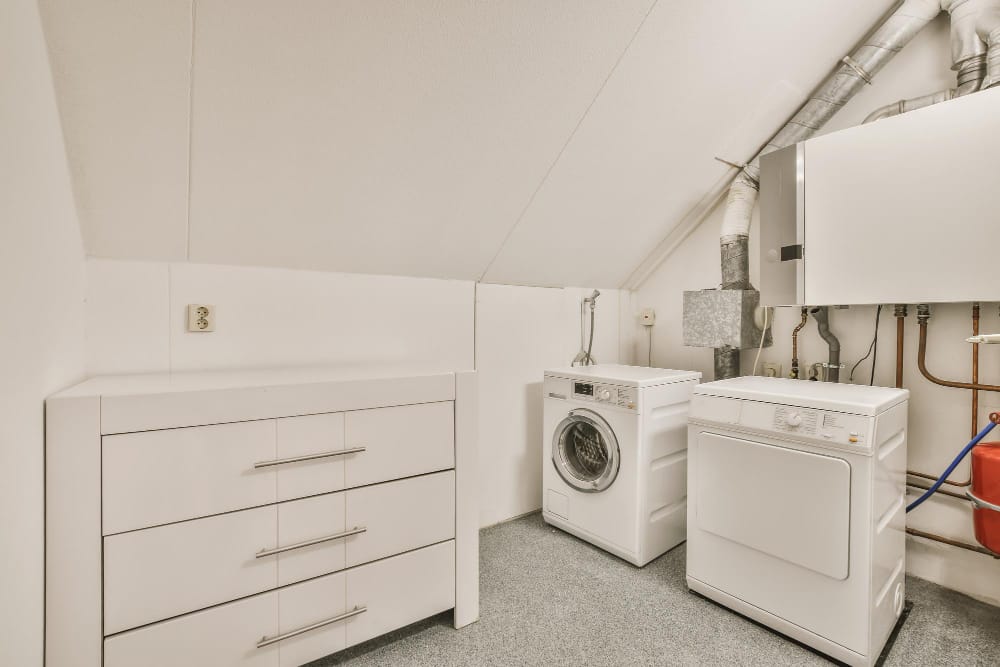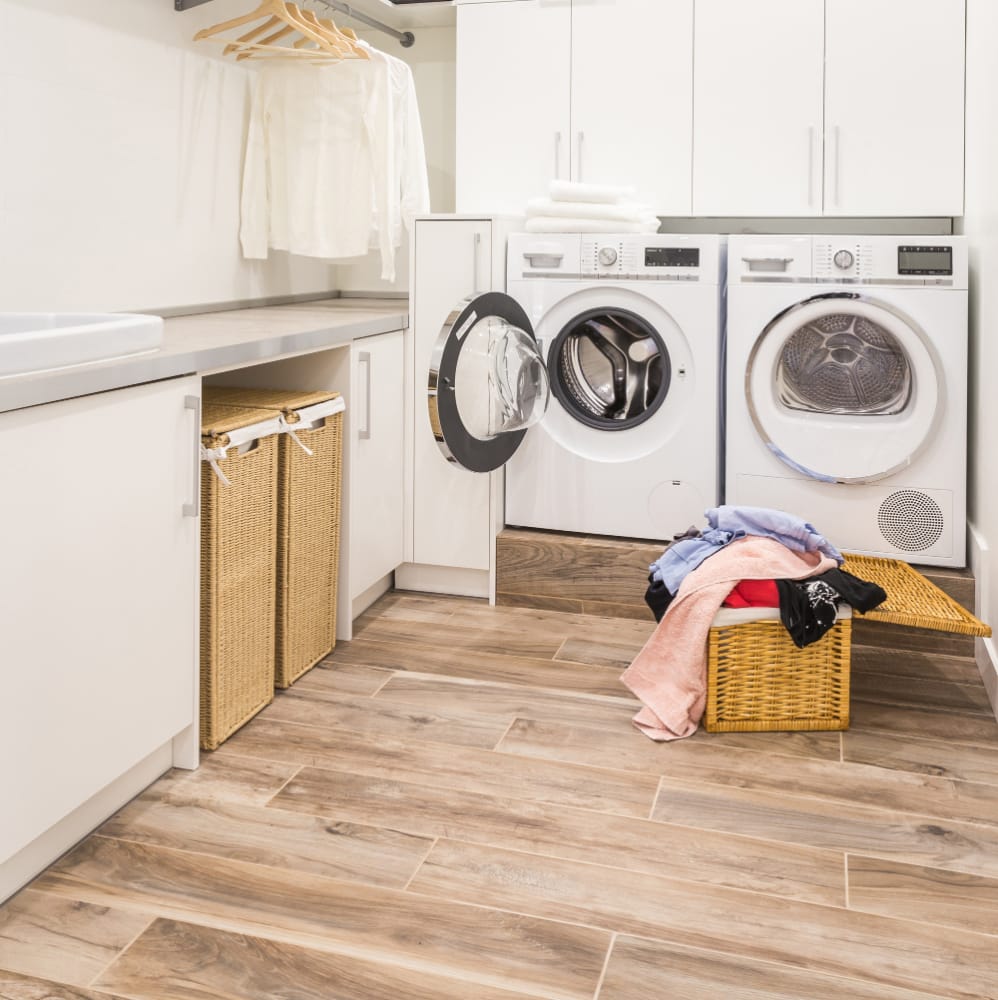Laundry rooms see constant humidity, drips, and heavy foot traffic — making flooring choice a critical decision. While many materials claim to be water-resistant, only a few truly stand up to the test of time. This moisture-proof flooring options for utility rooms guide compares the top three contenders for 2025: vinyl, tile, and laminate.
Overview: Waterproofing Strength vs. Style
Each flooring type offers a unique balance of durability, maintenance, and design flexibility.
| Flooring Type | Waterproof Level | Cost Range (Installed) | Lifespan | Maintenance | Design Variety |
|---|---|---|---|---|---|
| Luxury Vinyl (LVP / SPC) | 100% | $3–$7 per sq. ft. | 15–20 years | Very Low | Excellent |
| Porcelain / Ceramic Tile | 100% | $7–$12 per sq. ft. | 20–30 years | Moderate | Excellent |
| Waterproof Laminate | 90–95% | $4–$6 per sq. ft. | 10–15 years | Low | Good |
Vinyl leads in versatility, tile wins for long-term value, and laminate appeals to homeowners seeking affordability with moderate protection.
Vinyl Flooring: Affordable Performance and Style
Vinyl has become the go-to choice for laundry rooms thanks to its waterproof core, resilience, and aesthetic variety.
Pros:
Completely waterproof and pet-friendly.
Easy DIY installation via click-lock systems.
Cushioned underfoot and warm to the touch.
Realistic wood, stone, and tile textures.
Cons:
Can dent under heavy appliances.
Lower-end brands may fade under UV exposure.
Best For: Homeowners seeking a cost-effective, stylish option with minimal upkeep.
Tile Flooring: Classic Durability and Longevity
Porcelain and ceramic tile remain the industry standard for waterproofing excellence.
Pros:
100% waterproof when properly grouted and sealed.
Extremely resistant to scratches, heat, and chemicals.
Ideal for radiant floor heating systems.
Vast color, size, and finish selections.
Cons:
Cold and hard underfoot unless paired with underlayment.
Grout requires sealing every 2–3 years.
Best For: Homeowners prioritizing durability and resale value — especially in high-traffic or multi-purpose laundry/mudroom spaces.
Laminate Flooring: Style on a Budget
Modern waterproof laminates have improved dramatically, offering realistic visuals with better moisture resistance than ever before.
Pros:
Affordable and easy to install.
Scratch-resistant, perfect for active households.
Smooth, consistent finish ideal for small spaces.
Cons:
Not ideal for heavy moisture or standing water.
Requires careful installation to prevent edge swelling.
Best For: Quick, budget-friendly makeovers where exposure to major leaks is minimal.
Comparative Performance
| Category | Winner | Reason |
|---|---|---|
| Waterproof Protection | Tile | Impervious when sealed |
| Affordability | Vinyl | Best cost-to-durability ratio |
| Comfort | Vinyl | Warmer and softer underfoot |
| Aesthetic Range | Tie (Vinyl/Tile) | Excellent texture and color variety |
| Ease of Installation | Laminate | Simplest DIY setup |
For multi-room projects, many homeowners mix materials — tile in laundry areas and vinyl in connecting spaces — for seamless yet functional design flow.
Cost Efficiency Tip
If your remodel includes nearby wet zones, such as bathrooms or mudrooms, combine flooring work with a Sacramento bathroom renovation to save on labor costs. Contractors can install consistent waterproofing layers and transitions across rooms, boosting long-term protection.
Builder’s Notes
Each flooring material has its strengths — vinyl for versatility, tile for longevity, and laminate for affordability. The right choice depends on your lifestyle, home design, and budget.
👉 For maximum value, consider SPC vinyl or porcelain tile. Both offer unmatched waterproofing and modern design versatility that withstands years of use.

